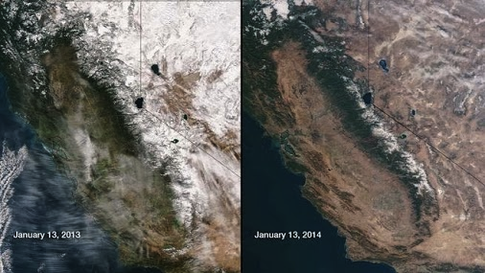|
15. Tropical ocean forcing of the persistent North American west coast ridge of winter 2013/2014 - PDF The causes of the high pressure ridge at the North American west coast during winter 2013/14, the driest winter of the recent California drought, are examined. The ridge was part of an atmosphere-ocean state that included atmospheric circulation anomalies across the northern hemisphere and with warm sea surface temperature (SST) anomalies in the tropical west and northeast Pacific and the south Indian Ocean and cool SST anomalies in the central tropical Pacific. The SST anomalies differ sufficiently between data sets that, when used to force an atmosphere model, the resulting simulation of circulation anomalies vary in realism to a striking degree. Recognizing uncertainty in the SST anomalies, we use a series of idealized tropical SST anomaly experiments to identify an optimal combination of SST anomalies that forces a circulation response that best matches observations.
The resulting optimal SST pattern resembles that observed. The equilibrium and transient upper troposphere vorticity balance is analyzed to understand the sequence of events that connect these SST anomalies to the west coast ridge. The ridge arose as a summed effect of Rossby waves forced by the collection of SST anomalies with the vorticity balance dominated by relative and planetary vorticity advection terms that drive vortex compression and subsidence at the west coast. The ridge also, in observations and model, shields the west coast from storms which are diverted north and south. The results suggest that tropical Pacific and Indian Ocean SSTs were a key driver of the west coast ridge and drought of winter 2013/14. REFERENCE
|
 EASM2: LINKING NEAR-TERM FUTURE CHANGES IN WEATHER AND HYDROCLIMATE IN WESTERN NORTH AMERICA TO ADAPTATION FOR ECOSYSTEM AND WATER MANAGEMENT EASM2: LINKING NEAR-TERM FUTURE CHANGES IN WEATHER AND HYDROCLIMATE IN WESTERN NORTH AMERICA TO ADAPTATION FOR ECOSYSTEM AND WATER MANAGEMENT | |
| Lamont-Doherty Earth Observatory of Columbia University 61 Route 9W Palisades, NY 10964
| |
|
| |
